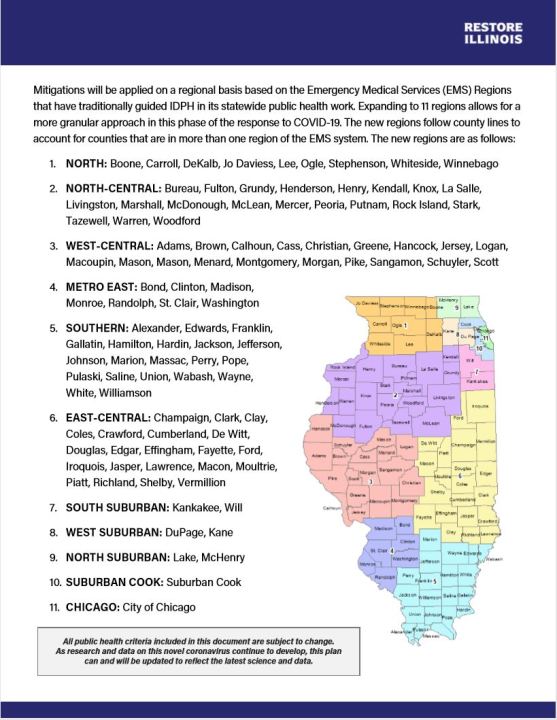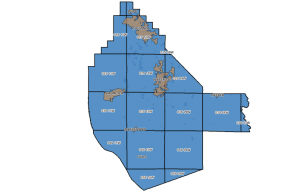Pritzker releases COVID-19 mitigation plan
Gov. JB Pritkzer announced a new mitigation plan focused on combatting a resurgence of coronavirus cases and maintaining the progress the state has made to flatten its curve in the last four months.
“Illinois now has the lowest infection rates among all our neighboring states and one of the lowest positivity rates in the country – and it’s because of the individual actions of millions of our residents,” Pritzker said. “Opening up our economy does not have to come with a spike in cases. Other countries have done it successfully while reducing cases and infection rates. But that requires vigilance on the part of all of us. It’s imperative that individuals, families, workers and businesses follow the recommendations doctors have given about vital mitigations and that we act quickly if we see any outbreaks and upticks, signs that could lead to a surge of coronavirus infections.”

The mitigation or resurgence prevention plan was developed by the Illinois Department of Public Health.
The plan further breaks down Illinois into its 11 Emergency Medical Services regions, with Monroe County in the Metro East region. Other counties in that region are Bond, Clinton, Madison, Randolph, St. Clair and Washington.
The plan outlines three tiers of industry-specific mitigation actions that can be taken to prevent the spread of COVID-19. Some of those strategies will automatically be applied to higher risk settings like indoor bars and restaurants, while a larger list of actions can be taken in in places like gyms or salons if testing and contact tracing data in a region shows that would be prudent.
For any of the actions to be triggered, a region must have a sustained increase in its 7-day rolling average for its positivity rate and either a sustained 7-day increase in hospital admissions for COVID-19-like illnesses or a reduction in hospital capacity threatening surge capabilities. The IDPH defined that last metric as ICU capacity or medical/surgical beds being under 20 percent availability.
Alternatively, a region could see mitigation actions occur if the average positivity rate is greater than or equal to 8 percent for three consecutive days.
The plan lists specific actions in three tiers for bars and restaurants, hospitals, meetings, social events and religious gatherings, offices, organized group recreational activities and gyms, retail and salons and personal care.
It also says the list of settings and mitigation strategies is not exhaustive and other industries may be added if data shows that is needed.
In bars and restaurants, tier 1 strategies would see a reduction in indoor dining capacity and the suspension of indoor bar service. Tier 2 involves suspending indoor dining and bar service. Tier 3 suspends in-person dining, returning establishments to takeout only.
For meetings, social events and religious gatherings, tier 1 mitigation actions are to place additional limits on gatherings and room capacity. Tier 2 would see those limits become more strict, while tier 3 would have them become stricter still.
For group recreational activities and gyms, which includes fitness centers and sports, they would reduce indoor capacity, suspend organized indoor recreational activities and suspend organized indoor and outdoor recreational activities in tiers 1, 2 and 3, respectively.
For retail establishments, in tier 1 they would reduce their person capacity. Tier 2 would suspend in-person, non-essential retail and allow for online and curbside pick-up for everything. The third tier suspends all non-essential retail, which means only essential businesses like grocery stores and pharmacies would be open.
Finally, salons and personal care businesses would institute a temporary location shutdown if that location in tier 1 is tied to an outbreak of COVID-19. In tier 2, the same would occur and there could be more mitigations. In the third tier, all operations would be suspended.






